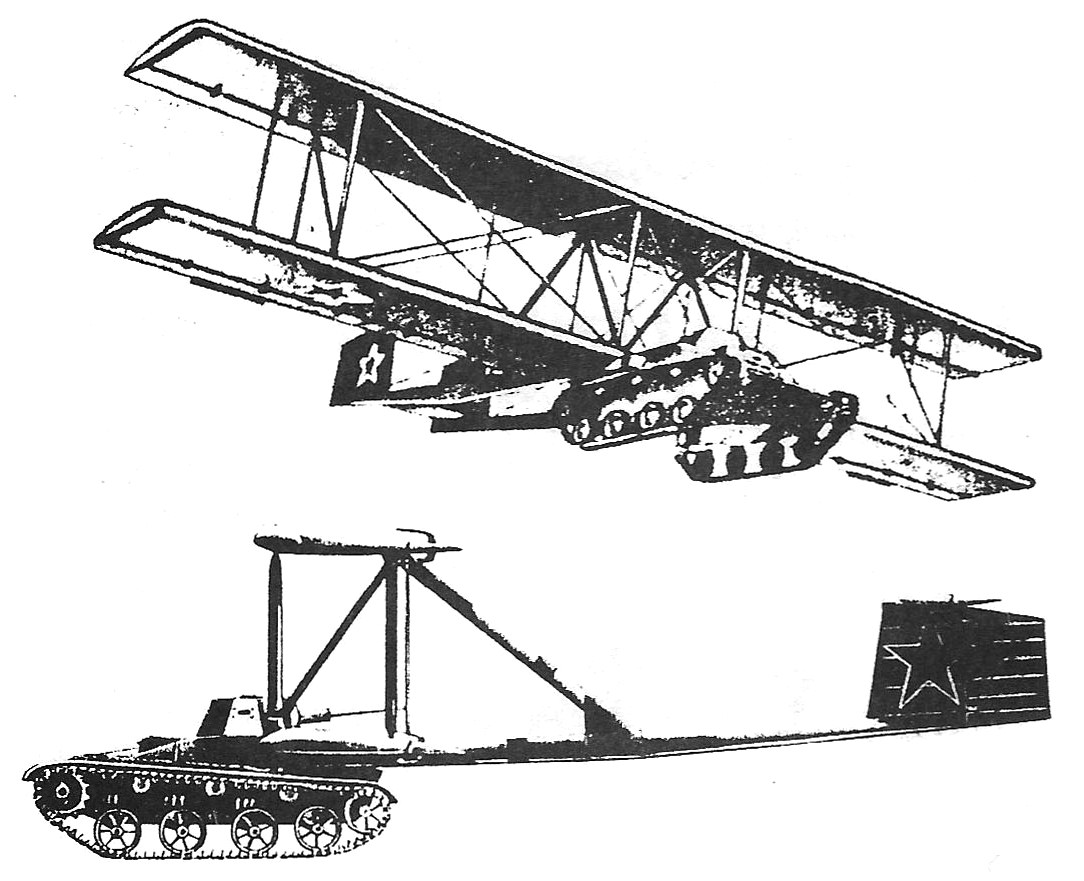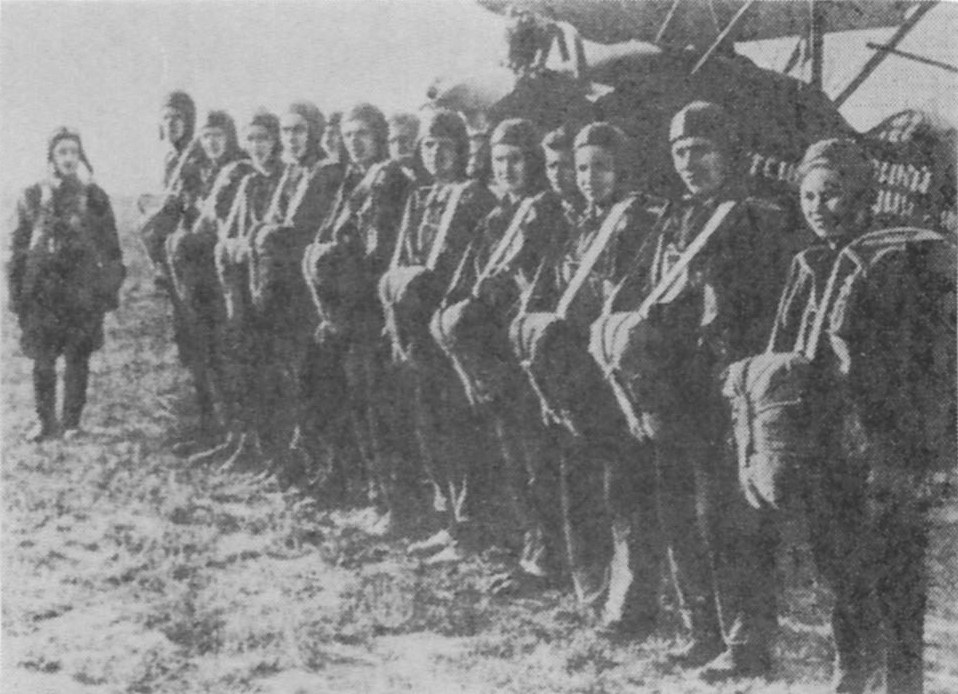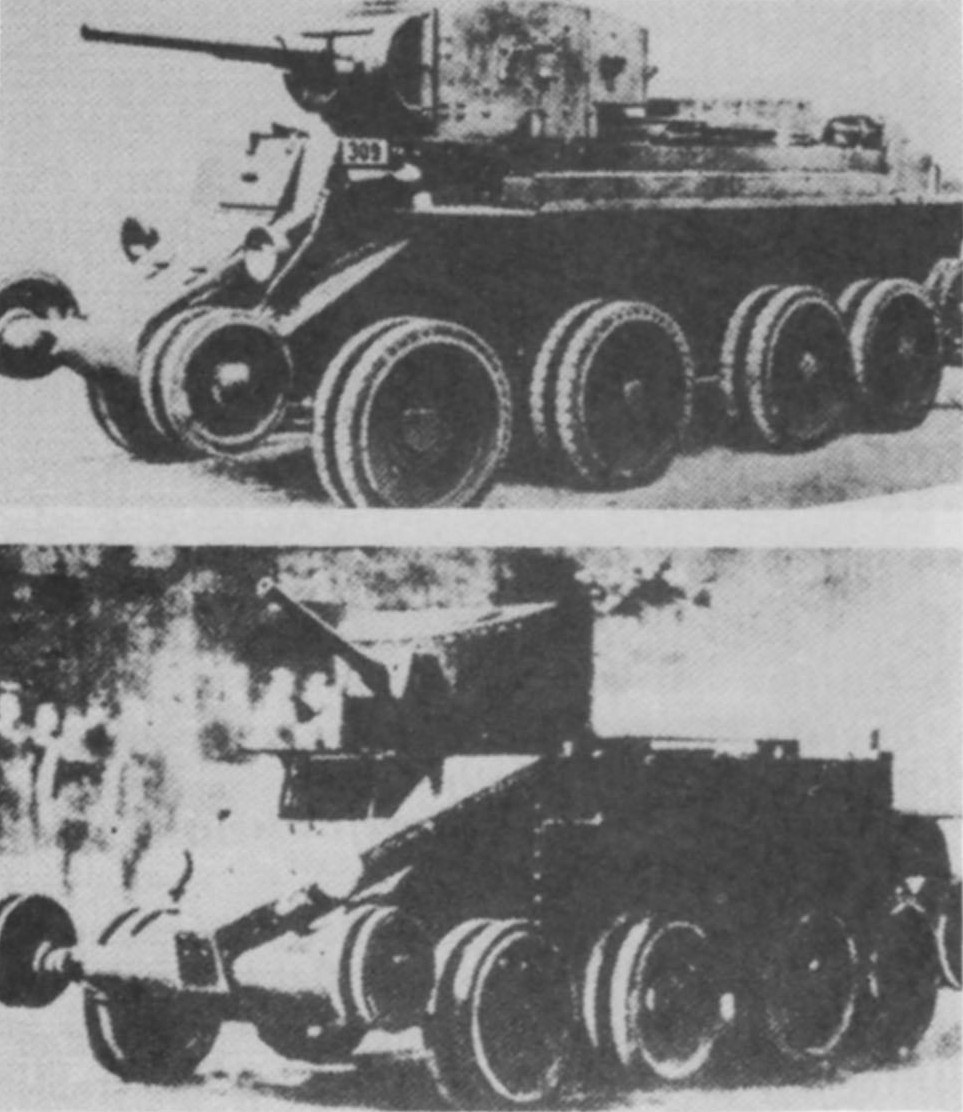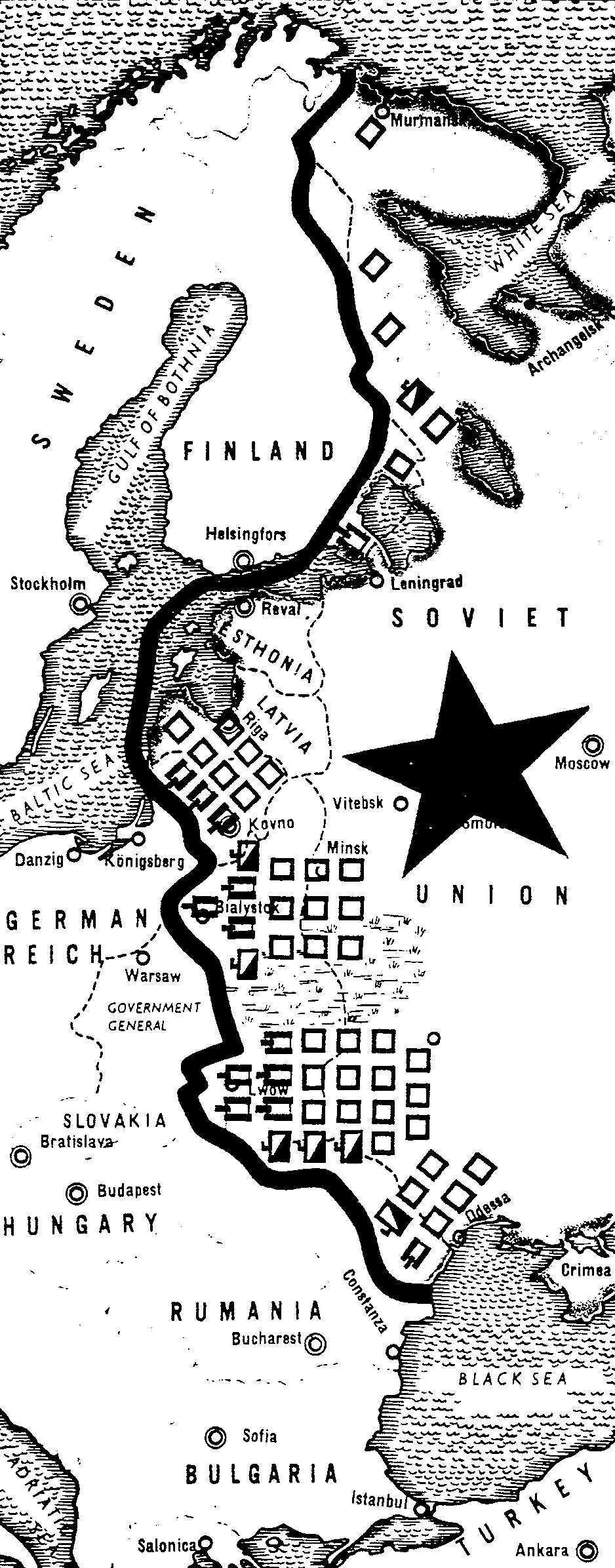Review
Russian Specialist Lays Bare Stalin’s Plan to Conquer Europe
- Icebreaker: Who Started the Second World War?, by Viktor Suvorov (Vladimir Rezun). London: Hamish Hamilton, 1990. Hardcover. Maps. Photos. Source references. Index.
Reviewed by Joseph Bishop
It sometimes happens that the most significant historical works are virtually ignored by the mainstream press, and consequently reach few readers. Such is the case with many revisionist studies, including this important work by a former Soviet military intelligence officer who defected to the West in 1978. Even before the appearance of this book, he had already established a solid reputation with the publication of five books, written under the pen name of Viktor Suvorov, on the inner workings of the Soviet military, and particularly its intelligence operations.
In Icebreaker Suvorov takes a close look at the origins and development of World War II in Europe, and in particular the background to Hitler’s “Operation Barbarossa” attack against the Soviet Union on June 22, 1941. Since its original publication in Russian (entitled Ledokol) in France in 1988, it has been published in an astonishing 87 editions in 18 languages. In spite of its importance to the historical record, Icebreaker has received very little attention in the United States. The few reviews that have appeared here have been almost entirely brief and dismissive — a shameful treatment that reflects the cowardice and intellectual irresponsibility of a “politically correct” scholarly establishment.
According to the conventional view, Hitler’s perfidious attack abruptly forced a neutral and aloof Soviet Russia into war. This view further holds that a surprised Stalin had naively trusted the deceitful German Führer. Rejecting this view as political propaganda, Suvorov shows Stalin’s personal responsibility for the war’s outbreak and progression. Above all, this book details the vast Soviet preparations for an invasion of Europe in the summer of 1941 with the goal of Sovietizing central and western Europe. Suvorov is not alone in his view. It is also affirmed by a number of non-Russian historians, such as American scholar R. H. S. Stolfi in his 1991 study Hitler’s Panzers East: World War II Reinterpreted (reviewed by me in the Nov.-Dec. 1995 Journal).
In spite of rigid Soviet censorship, Suvorov has succeeded in digging up many nuggets of valuable information from publicly available Soviet writings that confirm his central thesis. Icebreaker is based on the author’s meticulous scouring of such published sources as memoirs of wartime Soviet military leaders, and histories of individual Soviet divisions, corps, armies, fleets, and air units.
‘Second Imperialist War’
A central tenet of Soviet ideology was that the Soviet Union, as the world’s first Marxist state and bulwark of “workers’ power,” would eventually liberate all of humanity from the yoke of capitalism and fascism (the “last resort of monopoly capitalism”). While Soviet leaders might disagree about the circumstances and timing of this process of global liberation, none doubted the importance of this objective. As Suvorov notes:
“For Lenin, as for Marx, world revolution remained the guiding star, and he did not lose sight of this goal. But according to the minimum program, the First World War would only facilitate a revolution in one country. How, then, would the world revolution take place thereafter? Lenin gave a clear-cut answer to this question in 1916: as a result of the second imperialist war …”
Initially the “Union of Soviet Socialist Republics” was made up of only a handful of constituent republics. Lenin and the other Soviet leaders intended that more republics would be added to the USSR until it encompassed the entire globe. Thus, writes Suvorov, “the declaration accompanying the formation of the USSR was a clear and direct declaration of war on the rest of the world.”
Hitler understood this much better than did the leaders of Britain, France or the United States. During a conversation in 1937 with Lord Halifax, one of Britain’s most important officials, he said: “In the event of a general war [in Europe], only one country can win. That country is the Soviet Union.” In Icebreaker, Suvorov explains how in 1939 Stalin exploited the long-simmering dispute between Germany and Poland over Danzig and the “Polish Corridor” to provoke a “second imperialist war” that would enormously expand the Soviet empire.
Stalin anticipated a drawn-out war of attrition in which Germany, France and Britain would exhaust themselves in a devastating conflict that would also spark Communist uprisings across Europe. And as the Soviet premier expected, “Icebreaker” Germany did indeed break up the established order in Europe. But along with nearly everyone else outside of Germany, he was astonished by the speed and thoroughness with which Hitler subdued not only Poland, but also France, Belgium, the Netherlands, Denmark, Norway, Yugoslavia and Greece. Dashing Kremlin expectations that a “second imperialist war” would quickly usher in a Soviet Europe, by July 1940 Hitler was effectively master of the continent.
Soviet Preparations
 |
The Soviet armies of the First Strategic Echelon were deployed in mid-1941 to strike against Europe. Another seven armies in the rear were making their way to the frontier in preparation for the massive Soviet offensive. |
 |
The Soviet 9th Army was concentrated not on the German border, but on the frontier with Romania. A 9th Army strike at Romania would quickly seize Germany’s most important source of oil. |
 |
Two Soviet mountain armies were set to help cut off Germany’s oil “jugular” and prevent the movement of German forces into Romania. |
 |
Deployment sites of the “first wave” Soviet airborne corps. Another five airborne corps were secretly being organized deep inside the Soviet Union. |
Throughout history, every army has had a basic mission, one that requires corresponding preparations. An army whose mission is basically defensive is accordingly trained and equipped for defensive war. It heavily fortifies the country’s frontier areas, and employs its units in echeloned depth. It builds defensive emplacements and obstacles, lays extensive minefields, and digs tank traps and ditches. Military vehicles, aircraft, weapons and equipment suitable for defending the country are designed, produced and supplied. Officers and troops are trained in defense tactics and counter-offensive operations.
An army whose mission is aggressive war acts very differently. Officers and troops are trained for offensive operations. They are supplied with weapons and equipment designed for attack, and the frontier area is prepared accordingly. Troops and their materiel are massed close to the frontier, obstacles are removed, and minefields are cleared. Maps of the areas to be invaded are issued to officers, and the troops are briefed on terrain problems, how to deal with the population to be conquered, and so forth.
Carefully examining the equipping, training and deployment of Soviet forces, as well as the numbers and strengths of Soviet weaponry, vehicles, supplies and aircraft, Suvorov establishes in great detail that the Red Army was organized and deployed in the summer of 1941 for attack, not defense.
Peculiar Tanks
Germany entered war in 1939 with 3,195 tanks. As Suvorov points out, this was fewer than a single Soviet factory in Kharkov, operating on a “peacetime” basis, was turning out every six months.
By 1941 everyone recognized the tank as the primary weapon of an army of attack in a European land war. During this period, Suvorov shows, the Soviets were producing large quantities of the well armed “Mark BT” tank, predecessor of the famed T34 model. “BT” were the initials for the Russian words “high speed tank.” The first of this series had a top speed of 100 kilometers per hour, impressive even by today’s standards. But as Suvorov goes on to note, this weapon had a peculiarity:
“Having said so many positive things about the numbers and quality of Soviet tanks, one must note one minor drawback. It was impossible to use these tanks on Soviet territory …Mark BT tanks could only be used in an aggressive war, only in the rear of the enemy and only in a swift offensive operation, in which masses of tanks suddenly burst into enemy territory …
“The Mark BT tanks were quite powerless on Soviet territory. When Hitler began Operation Barbarossa, practically all the Mark BT tanks were cast aside. It was almost impossible to use them off the roads, even with caterpillar tracks. They were never used on wheels. The potential of these tanks was never realized, but it certainly could never have been realized on Soviet territory. The Mark BT was created to operate on foreign territory only and, what is more, only on territory where there were good roads …
“To the question, where could the enormous potential of these Mark BT tanks be successfully realized, there is only one answer: in central and southern Europe. The only territories where tanks could be used, after their caterpillar tracks were removed, were Germany, France and Belgium … Caterpillar tracks are only a means for reaching foreign territory. For instance, Poland could be crossed on caterpillar tracks which, once the German autobahns had been reached, could then be discarded in favor of wheels, on which operations would then proceed …
“It is said that Stalin’s tanks were not ready for war. That was not so. They were not ready for a defensive war on their own territory. They were, however, designed to wage war on others.”
Airborne Assault Corps

The Soviet KT (A-40) winged tank. Upon landing, the wings and tail were quickly detached, making the tank immediately ready for battle. Suited only for offensive warfare, this remarkable weapon was rendered useless by Hitler’s “Barbarossa” attack.
Similarly designed for offensive war are paratroops. This most aggressive form of infantry is employed primarily as an invasion force. Germany formed its first airborne assault units in 1936, and by 1939 had 4,000 paratroops.
And the USSR? Suvorov explains: “By the beginning of the war [1939], the Soviet Union had more than one million trained paratroopers — 200 times more than all other countries in the world put together, including Germany…. It is quite impossible to use paratroopers in such massive numbers in a defensive war…. No country in history, or indeed all countries in the world put together, including the Soviet Union, has ever had so many paratroopers and air assault landing sub-units as Stalin had in 1941.”
As part of the planned invasion, in early 1940 orders were given for large-scale construction of airborne assault gliders, which were produced in mass quantity from the spring of 1941 onward. The Soviets also designed and built the remarkable KT “winged tank.” After landing, its wings and tailpiece were discarded, making the KT instantly ready for combat. The author also describes a variety of other offense-oriented units and weapons, and their deployment in June 1941 in areas and jumping-off points right on the frontiers with Germany and Romania. All these weapons of offensive war became instantly useless following the Barbarossa attack, when the Soviets
suddenly required defensive weapons.
Suvorov tells of a secret meeting in December 1940 attended by Stalin and other Politburo members at which General Pavel Rychagov, deputy defense minister and commander of the Soviet air force, discussed the details of “special operations in the initial period of war.” He spoke of the necessity of keeping the air force’s preparations secret in order to “catch the whole of the enemy air force on the ground.” Suvorov comments:
‘It is quite obvious that it is not possible to ‘catch the whole of the enemy air force on the ground’ in time of war. It is only possible to do so in peacetime, when the enemy does not suspect the danger.
“Stalin created so many airborne troops that they could only be used in one situation: after a surprise attack by the Soviet air force on the airfields of the enemy. It would be simply impossible to use hundreds of thousands of airborne troops and thousands of transport aircraft and gliders in any other situation.”
Suvorov also reports on the dismantling in June 1941 of the Soviet frontier defense systems, and the deployment there of masses of troops and armor poised for westward attack.
Stalin Preempted
During the period just prior to the planned Soviet invasion, the USSR’s western military districts were ordered to deploy all 114 divisions, then stationed in the interior, to positions on the frontier. Thus, remarks Suvorov, June 13, 1941, “marks the beginning of the greatest displacement of troops in the history of civilization.”
Such a massive buildup of forces directly on the frontier simply could not be kept secret. As Suvorov notes, Wilhelm Keitel, Field Marshal and Chief of Germany’s armed forces High Command, spoke about the German fears during a postwar interrogation:
“All the preparatory measures we took before spring 1941 were defensive measures against the contingency of a possible attack by the Red Army. Thus the entire war in the East, to a known degree, may be termed a preventive war … We decided … to forestall an attack by Soviet Russia and to destroy its armed forces with a surprise attack. By spring 1941, I had formed the definite opinion that the heavy buildup of Russian troops, and their attack on Germany which would follow, would place us, in both economic and strategic terms, in an exceptionally critical situation … Our attack was the immediate consequence of this threat …”
In 1941, Admiral N. G. Kuznetsov was the Soviet Navy minister, as well as a member of the Central Committee of the Soviet Communist Party. In his postwar memoirs, published in 1966, he recalled:
“For me there is one thing beyond all argument — J. V. Stalin not only did not exclude the possibility of war with Hitler’s Germany, on the contrary, he considered such a war … inevitable … J. V. Stalin made preparations for war … wide and varied preparations — beginning on dates … which he himself had selected. Hitler upset his calculations.”
Suvorov comments:

In early 1941 the Soviet Union had vastly more paratroops than all other countries combined. Parachutists, by their nature, can only be used in offensive operations.
“The admiral is telling us quite clearly and openly that Stalin considered war inevitable and prepared himself seriously to enter it at a time of his own choosing. In other words, Stalin was preparing to strike the first blow, that is to commit aggression against Germany; but Hitler dealt a preventive blow first and thereby frustrated all Stalin’s plans …
“Let us compare Keitel’s words with those of Kuznetsov. Field Marshal Keitel said that Germany was not preparing an aggression against the Soviet Union; it was the Soviet Union which was preparing the aggression. Germany was simply using a preventive attack to defend itself from an unavoidable aggression. Kuznetsov says the same thing — yes, the Soviet Union was preparing for war and would inevitably have entered into it, but Hitler disrupted these plans with his attack. What I cannot understand is why Keitel was hanged [at Nuremberg], and Kuznetsov was not.”
Suvorov believes that Hitler’s preemptive strike came just two or three weeks before Stalin’s own planned assault. Thus, as Wehrmacht forces smashed Soviet formations in the initial weeks of the “Barbarossa” attack, the Germans marveled at the great numbers of Soviet tanks and other materiel destroyed or captured — an enormous buildup sufficient not just for an assault on Germany, but for the conquest of all of Europe. Suvorov writes
“Hitler decided that it was not worth his while waiting any longer. He was the first to go, without waiting for the blow of the ‘liberating’ dagger to stab him in the back. He had begun the war in the most favorable conditions which could possibly have existed for an aggressor; but given the nature of Stalin’s grand plan, he could never have won it. Even in the most unfavorable conditions, the Red Army was able to ‘liberate’ half of Europe …”

These Soviet tanks, with removable caterpillar tracks, were designed for use on German roads and highways. So equipped, they were of little use on Soviet territory, where few roads were paved.
As devastating as it was, Hitler’s assault was not fatal. It came too late to be successful. “Even the Wehrmacht’s surprise attack on the Soviet Union could no longer save Hitler and his empire,” Suvorov writes. “Hitler understood where the greatest danger was coming from, but it was already too late.” With great effort, the Soviets were able to recover from the shattering blow. Stalin succeeded in forming new armies to replace those lost in the second half of 1941.
As Suvorov repeatedly points out, the widely accepted image of World War II, and particularly of the roles of Stalin and Hitler in the conflict, simply does not accord with reality:
“In the end … Poland, for whose liberty the West had gone to war, ended up with none at all. On the contrary, she was handed over to Stalin, along with the whole of Eastern Europe, including a part of Germany. Even so, there are some people in the West who continue to believe that the West won the Second World War.
“… Stalin became the absolute ruler of a vast empire hostile to the West, which had been created with the help of the West. For all that, Stalin was able to preserve his reputation as naive and trusting, while Hitler went down in history as the ultimate aggressor. A multitude of books have been published in the West based on the idea that Stalin was not ready for war while Hitler was.”
A Soviet Europe?
An intriguing historical “what if” is to speculate on the fate of Europe if Stalin, and not Hitler, had struck first. For example, a less rapidly successful German campaign in the Balkans in the spring of 1941 could have forced the postponement of Barbarossa by several weeks, which would have enabled Stalin to strike the first blow.
Could German forces have withstood an all-out Soviet assault, with tens of thousands of Soviet tanks and a million paratroopers? With the advantage of striking first, how quickly could Stalin have reached Berlin, Amsterdam, Brussels, Paris, Rome and Madrid? Suvorov writes:
“It would be a mistake to underestimate the enormous strength and vast resources of Stalin’s war machine. Despite its grievous losses, it had enough strength to withdraw and gather new strength to reach Berlin. How far would it have gone had it not sustained that massive blow on 22 June, if hundreds of aircraft and thousands of tanks had not been lost, had it been the Red Army and not the Wehrmacht which struck the first blow? Did the German Army have the territorial expanse behind it for withdrawal? Did it have the inexhaustible human resources, and the time, to restore its army after the first Soviet surprise attack?”
Partially answering his own question, Suvorov states: “If Hitler had decided to launch Operation Barbarossa a few weeks later, the Red Army would have reached Berlin much earlier than 1945.”
Suvorov even presents a hypothetical scenario of a Soviet invasion and occupation of Europe, replete with Stalinist terror and oppression:

By mid-June 1941, Stalin had concentrated enormous Red Army forces on the western Soviet border, poised for a devastating attack against Europe. This diagram appeared in the English-language edition of the German wartime illustrated magazine “Signal.”
“The [Soviet] troops meet endless columns of prisoners. Dust rises on the horizon. There they are, the oppressors of the people — shopkeepers, bourgeois doctors and architects, farmers and bank employees. The Chekists’ [NKVD] work will be hard. Prisoners are cursorily interrogated at every stopping place. Then the NKVD investigates each one in detail, and establishes the degree of his guilt before the working people. But by now it has become necessary to expose the most dangerous of the millions of prisoners: the former Social Democrats, pacifists, socialists and National Socialists, former officers, policemen and ministers of religion.
“Millions of prisoners have to be sent far away to the east and the north, in order to give them the opportunity, through honest labor, to expiate their guilt before the people …”
In Suvorov’s scenario, a camp called Auschwitz is captured early on by the advancing Soviets. In response to the question, “Well, what was it like in Auschwitz, pal?,” a Red Army man replies: “‘Nothing much, really’ The worldly-wise soldier in his black jacket shrugs his shoulders. ‘Just like at home. Only their climate is better’.”
Actually, “what if” historical speculation is normally uncertain because key factors are often simply imponderable. In this case, one such factor is Soviet morale. While it is certainly true that Soviet troops fought bravely and tenaciously in 1941-1943 defending their home territory, they may not have fought with the same fervor and morale in an invasion of Europe. The tenacity and endurance shown by Red Army troops in Hungary and Germany in 1944 and 1945 is not necessarily indicative, because these soldiers were bitterly mindful of more than two years of savage fighting against the invaders, and of stern occupation, on their home territory.
Another imponderable is the response of Britain and the United States to an all-out Soviet invasion of Europe. If Soviet forces had struck westward in July 1941, would Britain and the United States have sided with Stalin and the USSR, or would they have sided with Hitler and Germany, Italy, France, Romania, Finland, Hungary, Denmark, and the rest of Europe? Or would Roosevelt and Churchill have decided to remain aloof from the great conflict?
Anyway, when Hitler did launch his preemptive strike against Soviet Russia, Roosevelt and Churchill immediately sided with Stalin, and when the Red Army took half of Europe in 1944-45, neither the British nor the American leader objected.
What can now be stated with certainty — thanks to the work of Suvorov and other revisionist historians — is that in smashing the great Soviet military buildup in 1941, Hitler dashed Stalin’s plan to quickly conquer Europe, and that, in spite of his defeat in 1945, Hitler saved at least the western half of Europe, and tens of millions of people, from the horrors of Soviet subjugation.
From The Journal of Historical Review, November/December 1997 (Vol. 16, No. 6), pages 22-27.
The Author
Joseph Bishop studied history and German at a South African university. Currently employed in a professional field, he resides in the Pacific Northwest with his wife and three children.
